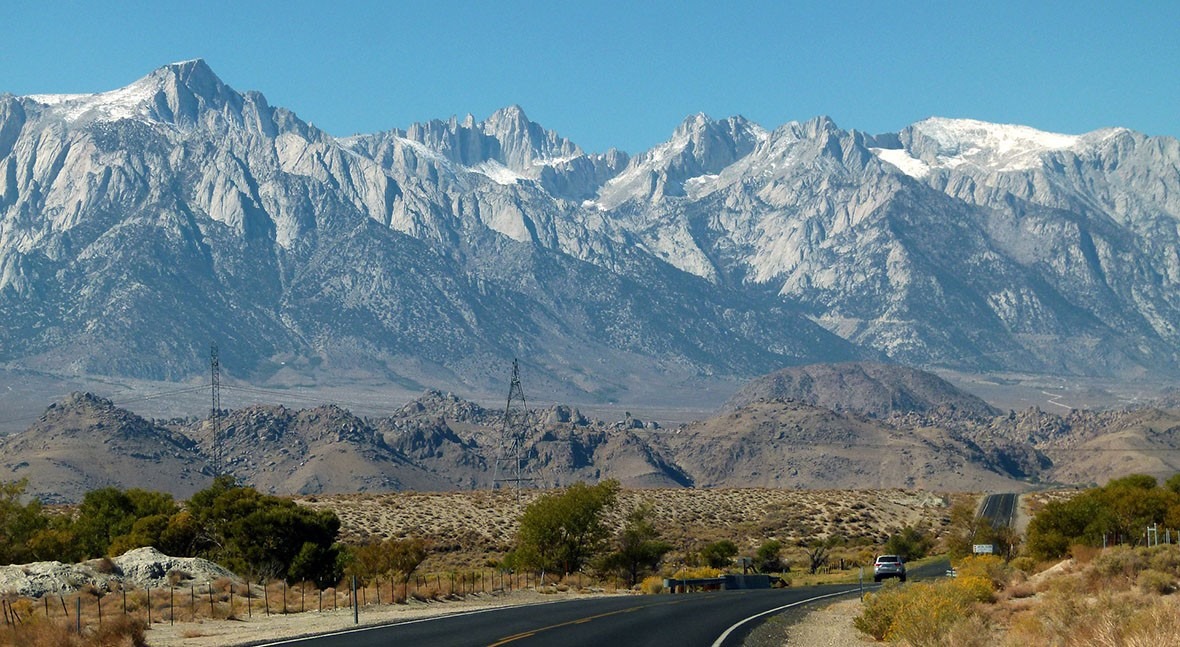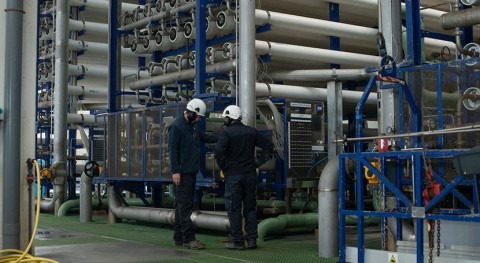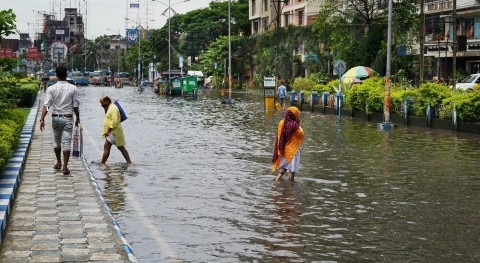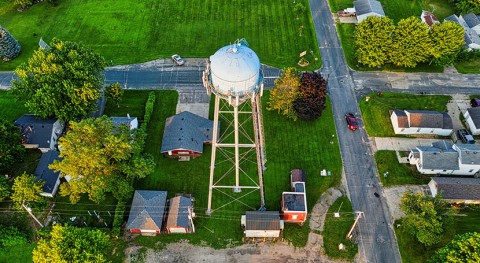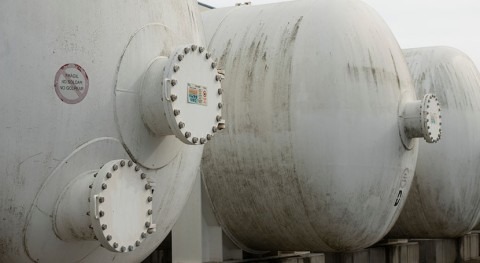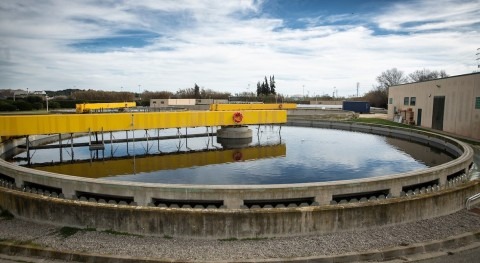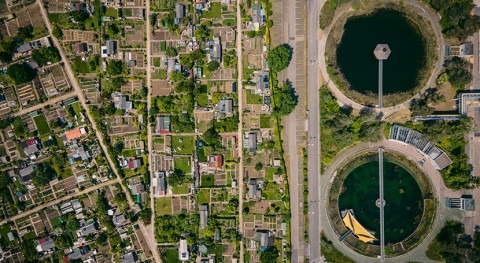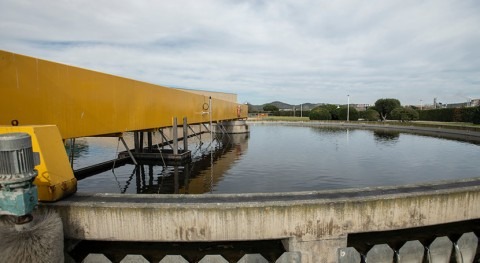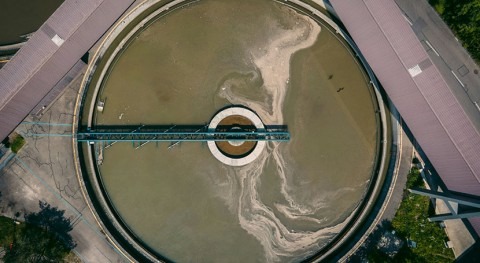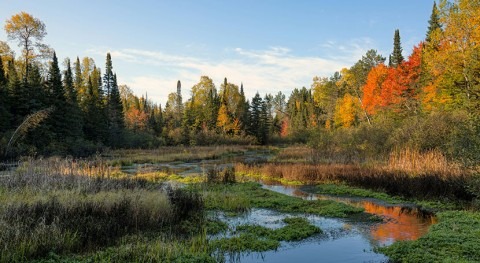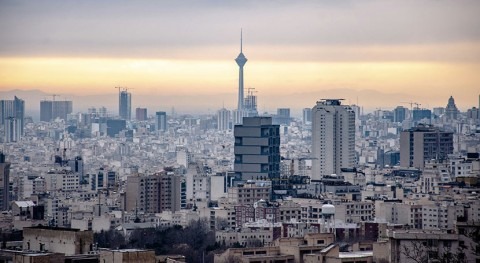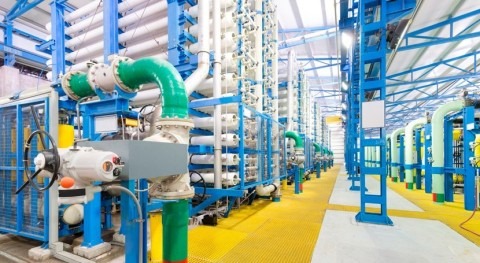As more greenhouse gases are released, the Earth’s atmosphere warms which in turn affects the distribution of water on the planet. While the planet’s average surface temperature has risen approximately 1.14 degrees Celsius (2.05 degrees Fahrenheit) since the late 19th century, more records of extreme rainfall and the acute lack of it are being recorded around the globe.
Global warming leads to more precipitation, driven mostly by more water vapour in the atmosphere. Across the United States alone, NASA shows heavy rainfall events have increased in the north-eastern states by 55 per cent, midwestern states by 42 per cent, and south-eastern states by 27 per cent between 1958 to 2016. In Northern Europe, a similar trend can be observed. Since the 1960s, the intensity of heavy precipitation has increased in northern and north-eastern Europe and the whole of Europe; a study has shown that the number of days with very heavy precipitation over Europe has increased on average by about 45%, according to the European Environment Agency. This is also the case in Northeast Asia, where the Tokyo Metropolitan University recently showed that monsoons are getting wetter.
But torrential rainfall and severe flooding are not the only extreme weather event produced by a warming climate. While some regions are forecasted to get wetter, others will become much more depleted. This is the case of parts of Africa, where the number of record-setting dry months increased by nearly 50 per cent in sub-Saharan Africa from 1980 to 2013. According to NASA, climate change started affecting global patterns of drought in the early 20th century.
A study by the EC demonstrated that a 1% increase in the area affected by drought can slow a country’s GDP growth by 2.7% per year
Severe precipitation and long dry spells take a toll on countless people around the world, causing significant damage to a country or community’s economic growth, increasing food insecurity, as well as creating unrest and prompting migration.
The repeated impacts of climatic extremes have a more significant and damaging influence than temperature extremes on a country’s economic growth showed a study by the European Commission. It also demonstrated that a 1% increase in the area affected by drought can slow a country’s gross domestic product (GDP) growth by 2.7% per year and a 1% increase in the area experiencing extreme rainfall can reduce GDP growth by 1.8%. There are also longer-term economic impacts. In the case of flooding, infrastructure and houses can be destroyed or swept away, leading to a possible rise of diseases.
Tropical storms bringing heavy showers also cause havoc. In 2018 alone, the global provider of reinsurance, Munich Re, said that these types of extreme weather events caused $51 billion in losses worldwide, much higher than the long-term annual average of $34 billion.
Climate change from fossil fuel greenhouse gases is disturbing rainfall patterns and will continue to do so in following decades, especially if the Paris Agreement goals, including limiting global temperature to well below 2 degrees Celsius, are not reached in the long term. Particularly vulnerable to these climate risks are large cities. Growing agglomerations of people can stress drinking water supplies, while urbanization can reduce the ability of the land to soak up the rainfall and recharge groundwater supplies. This is why numerous cities, but also communities and countries victims to more intense storms, megadroughts or chronic flooding have decided to take things into their hands and have come up with innovative and fruitful strategies to increase their water security.
Storing water underground
.jpg)
For centuries, groundwater reservoirs also known as aquifers, which are underground layers of permeable rock, gravel and sand, have been used as a drinking and irrigation source. But what if these aquifers could be managed and recharged for later use, particularly when there are strong precipitations? This idea is called managed aquifer recharge (MAR) and allows water to be banked for later usage. Although this idea is becoming increasingly attractive because of growing volatility of supply, the fundamental idea behind better groundwater management emerged from the Middle East during the 1st millennium BC, explains Geohydrologist Gaathier Mahed.
This practice has many advantages including minimizing the impact of evaporation, meaning that water can also be recycled from various sources, instead of being wasted, says Mahed. It also offers an alternative to damming rivers to create surface reservoirs. A solution that is frowned upon by many environmental organizations, among others, as dams can disrupt local ecosystems and lead to higher greenhouse gas emissions.
Climate change from fossil fuel greenhouse gases is disturbing rainfall patterns and will continue to do so in following decades
Another benefit MAR provides is the possibility of replenishing overdrawn and overstressed groundwater aquifers. An issue that already affects over half of the world’s major aquifers, according to a 2015 NASA study. In many areas, stormwater runs off into surface water instead of replenishing aquifers due greatly to urbanization, whereby wetlands have been drained and rivers have been cut off from floodplains.
The world is now home to various types of managed aquifer recharge projects. According to Gaathier Mahed, just in the United States, these schemes have increased from three well-fields in 1985 to approximately 72 in 2005, many of which are in various stages of development.
Growing agglomerations of people can stress drinking water supplies, while urbanization can reduce the ability to soak up rainfall
One state that is looking into magnifying this mitigation strategy is California. Presently, groundwater plays a decisive role in sustaining agriculture in many parts of the golden state. However, groundwater storage has been declining in the territory over the last several decades. Besides, prolonged periods of dry and hot weather are also melting one of California’s most important water sources: the Sierra Nevada Snowpack. Driven by the California Department of Water Resources, researchers and water experts are investigating the best locations to store water from intensifying water storms underground and to use it during the driest months of the year.
Recently, a team of researchers published a study in AGU on the potential benefit of MAR in California’s Central Valley. They found that overall, this mitigation strategy could recover historical overdraft in less depleted locations. In areas with severe depletion, the team said that transferring excess floodwaters could be a good solution and the project also significantly reduced flood risk.
Looking for buried water
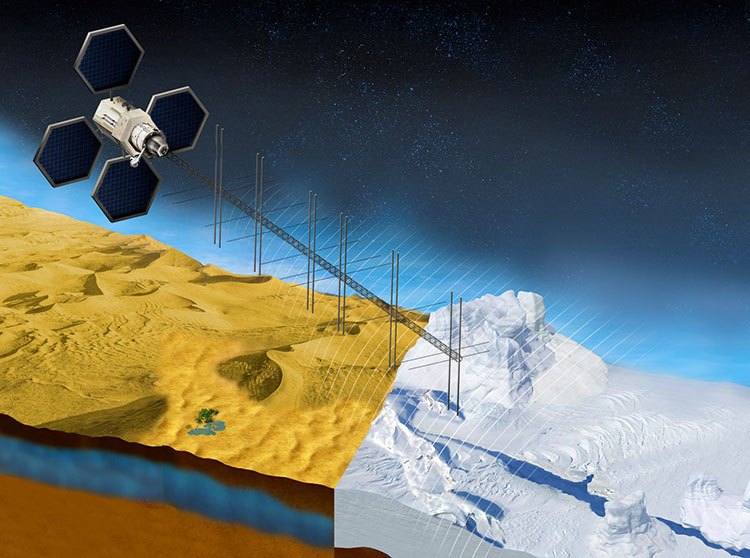
Nasa and Qatar project: The OASIS study project seeks to establish a mission that would find and examine those aquifers. Credit: NASA
Qatar is possibly one of the most water-stressed countries in the world. Its high rates of water consumption (430 litres of water per day on average) along with its scarcity of natural renewable water resources and its erratic rainfall and lack of rivers, make it overdependent on groundwater aquifers. According to research analyst Haweya Ismail, the country currently gets at least 50 per cent of its water supply by desalination, 36 per cent from groundwater and 14 per cent from recycled wastewater.
The monarchy has two main groundwater resources: the Rus and Umm er Rhaduma aquifers. However, Ismail notes that water withdrawal from these sources far exceeds their recharge rates and has led to the rapid lowering of the water table, causing the deterioration of water quality and increasing saline intrusion.
The Qatar Foundation and NASA have come together to learn about aquifers in arid areas and how climate change will affect them
Furthermore, Qatar is no stranger to the effects of climate change. The region is already witnessing sea level rise, higher temperatures, ocean acidification, intensifying sandstorms and increased desertification.
In an attempt to get a better understanding of aquifers in arid landscapes as well as how climate change will affect them in the future, the Qatar Foundation and NASA have come together to design a mission to learn about underground aquifers in arid areas and how climate change will affect them in the future.
The project will put a satellite in Earth orbit to map the distribution of shallow aquifers beneath the desert's surface in North Africa and the Arabian Peninsula. According to James Graf, director for Earth Science and Technology at JPL in Southern California, “OASIS (that stands for Orbiting Arid Subsurfaces and Ice Sheet Sounder) would be the first spaceborne radar specifically designed to detect directly subsurface water on Earth”.
The start-up Seawater Solutions began an experiment using seawater to grow food in Scotland, building an artificial saltmarsh
The satellite’s radar instrument will be used to learn how the underground aquifers originated and how groundwater moves beneath the deserts through a complex system of subsurface fractures, that spread out like a spiderweb between aquifers. In a press release, NASA said that the data collected in the process would help with aquifer management.
"Warm and cold deserts are responding to climatic changes by expanding and shrinking, respectively," said Essam Heggy, the OASIS principal investigator and chief scientist and research program director of the Earth Science Program at QEERI. "Studying the forces driving these transformations will give us insight into the evolution of deserts on Earth."
Could seawater be used to grow food?

The last solution we will analyse in this article also tackles the growing challenges of water scarcity but is specifically for the agriculture sector. With a growing world population that is expected to escalate to over 10 billion by 2050, the global food production will need to expand by approximately 70 per cent by 2050, warns The World Bank. Yet in some parts of the world, traditional agriculture is facing increasing water scarcity as a result of the climate crisis.
In search of a resource that could replace freshwater, the start-up Seawater Solutions began an experiment using seawater to grow food on a farm on the west coast of Scotland.
The scheme involves building an artificial saltmarsh by pumping seawater onto degraded farmland or land affected by flooding, to then grow halophytes, plants that thrive in water or soil with high salinity. The plants produced can either be eaten or used as a raw material for cosmetics, biofuels, and animal fodder.
Communities will have to keep on looking and implementing creative ideas and strategies to mitigate the effects of global warming
The saltmarshes also provide ecosystem services says the start-up. They protect the coastline from floods and erosion and sequester up to 30 times more carbon as rainforests. Farmers, according to Seawater Solutions, could therefore monetise carbon storage on their land by selling carbon credits, at about €2,600 per hectare per year.
This groundbreaking solution is also being tested in The Netherlands, where Salt Farm Foundation has been analysing the salt tolerance of conventional crops, such as potatoes or cabbage, finding that some varieties can thrive with brackish water.
Nevertheless, the idea of replacing freshwater with seawater does not seem very appealing to farmers for the moment. As both the Salt Farm Foundation and Seawater Solutions have admitted they have found it difficult to find farmers willing to try their solutions. They both hint that since western Europe still has abundant rainfall, the interest in seawater or brackish water irrigation is low. But that may change as climate change impacts Europe further.
Conclusion
With climate change projected to increase the surface water supplies and variation in precipitation, as well as reducing snowpacks and glaciers, communities will have to keep on looking and implementing creative ideas and strategies to mitigate the devastating effects of global warming.


